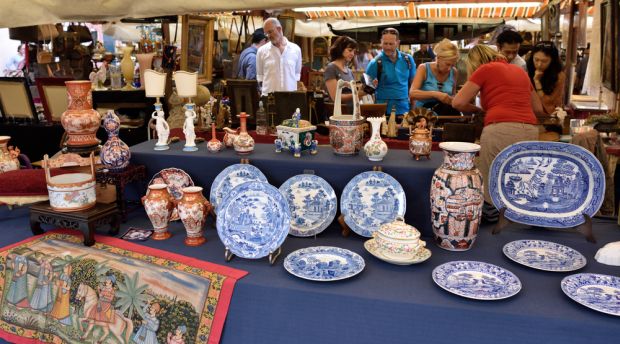Becoming an Art Dealer: What it is Like Having a Career as an Art Dealer
Post Views 15In general, a person becomes an art dealer because he has a passion for art. The pleasure that comes with making a living combined with the freedom of owning one’s own business can make this an extremely gratifying career. Successful art dealers have the ability to cultivate a network of artists and simultaneously establish connections with collectors and museums who are interested in the work of their artists. The very best dealers develop reputations for anticipating swings in taste and value. Some seem to be able to create demand for an artist by simply agreeing to represent her. Most dealers specialize in a period, style, or type of art, such as 18th-century painting, works of the New York School, or contemporary sculpture. All dealers must keep up with developments in the art world, particularly in their areas of specialty, so their careers depend upon maintaining a wide range of contacts among critics, curators, auction houses, artists, and collectors. This is a career for the social-minded person, since much of the business is conducted at openings and in sales proposals made to collectors and museum curators. Most successful art dealers enjoy spending time with people in the art world and cultivating contacts with people who are interested in art.
Art markets are notoriously volatile, and the fortunes of gallery owners rise and fall with the markets. In the most recent crash, which occurred in 1990, art prices fell 30-50 percent and seventy out of New York City’s 500 art galleries were forced to close. Galleries that develop reputations for representing specific styles see their fortunes rise and fall as tastes change, and anticipating these changes is difficult, even for the most experienced professionals. The pleasures and possibilities for huge profits in the profession seem to offer rewards that balance the risks in art dealing, however. Many dealers have long and successful careers, and there is a steady supply of those whose taste and talent in the art world leads them to establish galleries.
Paying Your Dues to Become an Art Dealer
There are many paths to becoming an art dealer; almost all involve some participation in the art world. Many dealers begin with degrees in art history and work their ways up as assistants in other galleries, developing the contacts with clients and artists to enable them to strike out on their own. Others are former museum and auction house curators who decide to establish galleries specializing in the areas of art in which they have worked. Some artists discover that they have the business and social skills necessary to sell art, and they use their contacts with other artists to develop a body of work to represent.
As with any entrepreneurial venture, strong business and sales skills are a must. Most of the revenue earned by a typical gallery is generated by personal sales pitches to prospective buyers; this demands sales and social skills different from those that would be required to run a corner hardware store. Access to capital is also vital; gallery cash flow is variable. To survive in the long run, a gallery must be able to withstand dry spells. Frequently, galleries are partnerships in which one partner contributes capital and the other contributes the connections and knowledge to successfully operate the business.
Associated Careers Related to Being an Art Dealer
Gallery owners whose galleries don’t succeed often remain in the art world. Some go to work for other, more successful galleries, while others pursue careers as museum or auction curators, art critics, academics, or practicing artists. Some who are hit by downturns in the art market use one or more of these options to weather the storm and then reestablish their galleries when times improve.
Past and Future of Being an Art Dealer
For as long as there have been artists and buyers of art, there have been dealers, providing access to and information about the art world to those who wish to invest in or acquire art. The profession has existed in Europe since the Middle Ages, though galleries, providing a place for the public to come and view a dealer’s stock, are a more recent innovation. Many of the best known and longest lasting art galleries in the United States were originally founded in the 1920s, as American wealth in the world and greater post-war exposure to Europe created a wave of interest in art investment that caused the auction and gallery markets to grow significantly. Like all art booms, this one passed and was followed by other rises and falls. It is unlikely that the future will be any different, but galleries will persist as long as there is a demand for art.
Quality of Life
Two Years Out
The art dealer develops connections with the artists, collectors, and curators who will be crucial to her gallery’s success. Much depends upon decisions made at this point; the most successful dealers are those who can anticipate tidal swings in the world of artistic taste. Signing up artists who will be hot a decade hence is a sure-fire recipe for success. Of course, knowing which artists will be successful a decade hence is what distinguishes the talented and lucky dealers from the rest.
Five Years Out
By now, the dealer who has stayed in business has a network of buyers and artists. She has survived at least one swing in the art market and can start to look forward to the luxury of developing long-term dealer-buyer relationships. Her gallery is by no means mature, however, and the search for new talent which fits her buyers’ tastes continues.
Ten Years Out
A gallery which lasts for ten years has staying power, the ability to establish values that can weather the storms of the art market. In other words, the dealer who makes it this long has begun to establish a reputation, perhaps the most valuable commodity in the art world. The dealer’s challenge is to maintain his network of buyers, which often includes museum curators by now, and to continue to anticipate the vagaries of the art market.
Professional Profile
| # of people in profession | 6,000 |
| % male: | 50 |
| % female: | 50 |
| average hours per week: | 50 |
Professionals Read
Art Direction
Journal of Contemporary Art
American Art Review
Art Forum
Books, Films and TV Shows Featuring the Profession
Legal Eagles
Missing Monet
9 1/2 Weeks
Major Employers
| Christie’s 502 Park Avenue New York, NY 10022 Tel: 212-546-1000 |
Sotheby’s 1334 York Avenue New York, NY 10021 Tel: 212-606-7000 Fax: 212-606-7028 |
Castelli Gallery 420 West Broadway New York, NY 10013 Tel: 212-431-5160 Contact: Representation Department |
You’ll Have Contact With
Artists
Bankers
Event Planners
Publicists
Major Associations
| Art Dealers Association of America 575 Madison Ave. New York, NY 10022 Tel: 212-940-8590 |
National Antique and Art Dealers Association of America 12 E. 56 St. New York, NY 10022 Tel: 212-826-9707 |
Image credit: Oleg Znamenskiy / Shutterstock.com
Becoming an Art Dealer: What it is Like Having a Career as an Art Dealer by Granted Contributor



 If You Love Halloween Consider These 6 Jobs
If You Love Halloween Consider These 6 Jobs  How to Get a Job on a Cruise Ship: What it is Like Working on a Cruise Ship
How to Get a Job on a Cruise Ship: What it is Like Working on a Cruise Ship  Profiles of People Who Work At Home
Profiles of People Who Work At Home  What Types of Marketing Positions Are Available?
What Types of Marketing Positions Are Available?  7 Jobs for People Who Want to Work in Tech but Aren’t an Engineer
7 Jobs for People Who Want to Work in Tech but Aren’t an Engineer  Jobs That Allow You to Work Remotely
Jobs That Allow You to Work Remotely  How to Ace a Dental Hygienist Interview
How to Ace a Dental Hygienist Interview  What Are the Different Types of Internships?
What Are the Different Types of Internships?